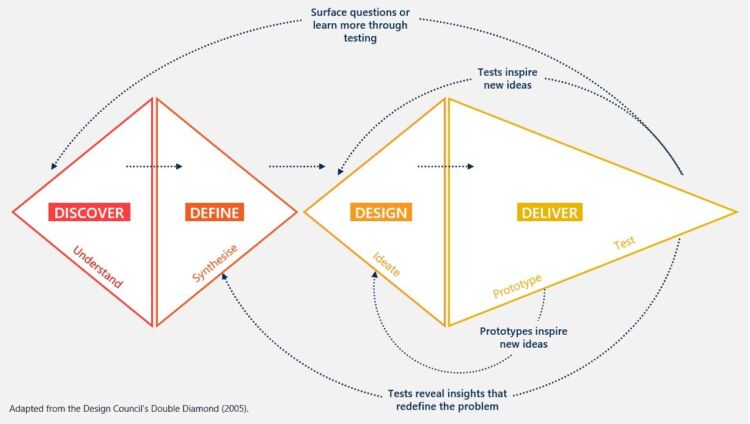Idea In Brief
New approach
When university change programs fail, it can leave staff and students dissatisfied over promised changes not materialising, taking longer than planned or costing more than expected. Nous has worked with several universities to drive change through customised sprints that draw from agile methods and human-centred design (HCD).
Many benefits
Agile sprints can deliver many benefits from universities. This includes acting as a catalyst for change, driving cultural and behavioural shifts, making change on the ground, improving comfort with uncertainty, engaging end users in developing solutions and breaking down hierarchies.
Success factors
We have identified the success factors for university change sponsors. These are tailoring the scope to the timeframe, establishing cross-functional teams, gaining necessary authorisation, taking a 'can do' attitude, not doing it all yourself, reporting back regularly, looking back afterward nd building capability.
Most organisations are seeking continuous improvement to their strategies and operations – and universities are no exception.
As mission-driven institutions with diverse demands from stakeholders and strict regulation, universities are under pressure. They must deliver multiple outcomes – for government, students, staff, industry and the community – so their objectives range from a quality education to impactful research to a great workplace, all with scarce resources.
As those varying demands morph over time and bump up against each other, universities need to evolve to ensure they can continue to deliver on their mission. But designing and implementing change can be difficult. We have seen many universities recognise that their current approaches and models are no longer fit for purpose yet struggle to make meaningful changes, in spite of plentiful goodwill, and often, tangible resources.
We have seen universities embark on large-scale ‘big bang’ transformations and narrower ‘piece by piece’ change programs. These approaches can be successful. Yet too many break down at the coal face, where changes on the ground run into resistance, and then – without university leaders quite realising why – there is a gradual reversion to the status quo.
Why do so many change initiatives struggle? Many are impeded by established structures, hierarchies and cultures as well as slow decision-making. Some university staff attribute failure to their institution’s desire to create ‘gold plated’ solutions. Or sometimes it just seems too hard to imagine a different way of being. There is too much disconnect between the abstract ‘light on the hill’ in the change program and the daily experience of the people affected.
Some transformations succeed. But when these programs fail, it can leave staff and students dissatisfied and disengaged over promised changes not materialising, taking longer than planned or costing more than expected.
So it is understandable that many universities are hungry for alternatives to traditional transformation approaches.
Customised sprints can overcome inertia
Enter a different approach, which has proven successful in other organisations and can also work in universities. Nous has worked with several universities to drive change through customised sprints that draw from agile methodologies and human-centred design (HCD).
In essence an agile approach seeks to speed up the delivery of value (benefits) through co-located, collaborative and self-managed teams with streamlined governance controls. It can fundamentally change project set-ups, decision making, planning and working. Using an agile approach demonstrates that change is possible by making progress in faster and more concrete ways, thus building momentum and breaking through inertia.
Meanwhile, HCD is a set of practices that place users at the centre, allowing designers to better understand their needs, motivations and concerns, and in doing so design solutions that will address their needs and improve their experience. HCD at work can be seen in the Design Council’s Double Diamond approach to change:

These methods inspire agile sprints, which are intensive efforts to focus on iterative development with users (such as staff and students) to design, develop and implement ideas. By putting a minimum viable product into practice quickly, refinement and improvement is achieved through usage not through development in the background over many months. This can be a catalyst to break through inertia to achieve lasting change.
To see this approach in action, consider the way a sprint could lead to iterative progress in an attempt to build a mode of transport.

Nous has worked with universities to use agile sprints to design and implement change, with considerable success. We are pleased to share what we learned, including the value for universities and the factors in achieving that value.
The agile sprint approach can rapidly deliver a wide range of benefits
We have seen the value of this approach for universities in several ways:
How to deliver agile sprints– and maximise their value
Higher education institutions are distinctive so the agile sprint approach needs to be tailored to the university context.
Firstly, it can be difficult to free up time for sprint participants. An agile sprint in other sectors might run for two weeks and require a small project team to commit to it full time. But this commitment can be unrealistic for a university’s professional services staff, academics and students. So in working with university partners on agile sprints, we often spread the time commitment over a longer period and allow involvement to be scaled up or down depending on availability.
Secondly, staff in many universities are accustomed to participating in committees where their role is to express opinions and exchange views. In agile sprints, all members (no matter their role outside the sprint) are expected to get their hands dirty and progress the work. The short timeframes and tangible outputs make this all-in approach essential. Because this approach can be foreign to sprint participants, extra time is needed up front to work through not just the process but also the mindset of agile.
Based on our experience supporting universities in delivering agile sprints, we have identified the success factors for university change sponsors:
An agile sprint is the right tool for the times
The challenges that universities face are likely to intensify. Universities that continue with business as usual run the risk of being overwhelmed by the pace of change. Well-designed agile sprints can act as a catalyst for driving lasting change through a university, with positive cultural influences as well.
Although easy to understand conceptually, there are important pre-conditions to achieve success when using this approach, but the benefits can be significant.
Get in touch to explore how we can support your university to harness the power of agile sprints.
Connect with Simon Lancaster on LinkedIn.
Co-authored by Jessica Weereratne during her time as a Director at Nous Group.
Prepared with input from Nic Dillon.


